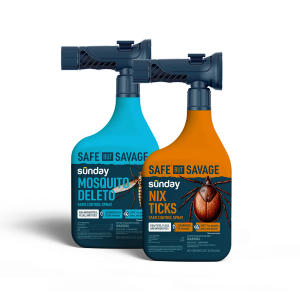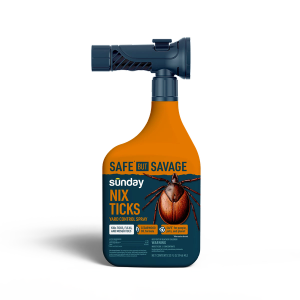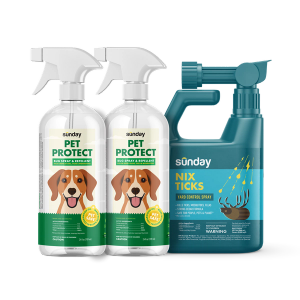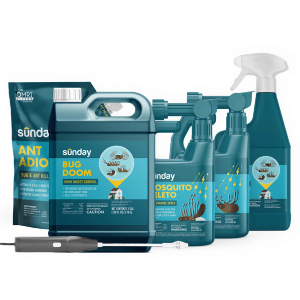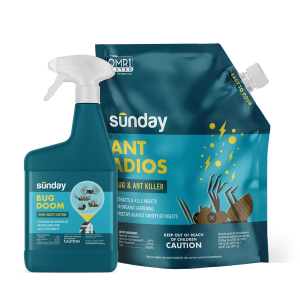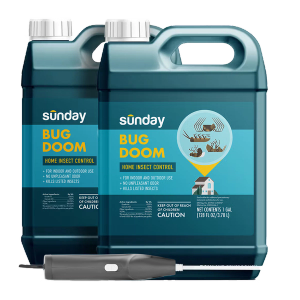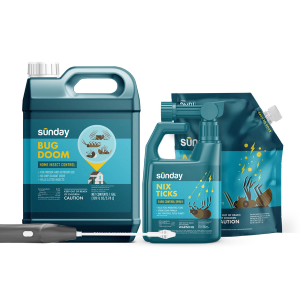What are sod webworms?
Sod webworms are surface-feeding insects and can wreak havoc on your lawn. Larvae, or the caterpillar, eat turfgrass at the grass blade's crown, where the roots connect to the shoots.
The degree of damage caused by webworms depends on your lawn's condition—an already stressed and dry lawn with a minor sod webworm infestation can be very damaging.
Where do sod webworms live?
Sod webworm larvae construct tunnels lined with silk in thatch or at the soil line. They spend their days in the tunnels, coming out only to feed on the grass blades at night.
They tend to prefer warm-season lawns in southern regions, but can be a problem in cool-season lawns if the soil is very dry.
When are sod webworms active?
You may begin to notice sod webworm damage in the late spring to late summer. It'll be evident during dry periods. If you're watering your lawn correctly, you can determine if this is your primary problem by paying attention to regrowth after the rains return.
How to ID sod webworms
Larvae
- Brown head
- Body that could be beige, gray, brown, or green
- Full-grown larvae are brownish to grayish with black spots and a dark head
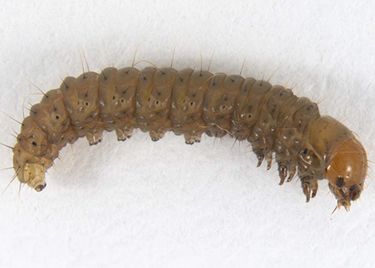
Sod webworm larvae (Samuel Abbott, Utah State University Extension)
Adults
- Also known as "snout moths"
- Short, erratic, darting flights above grass
- Small and dull-colored
- Snouts protrude forward, wings are held over back
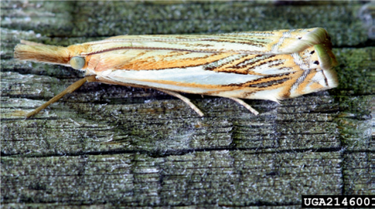
Adult sod webworm (University of New Hampshire Extension)
How to manage sod webworms in your lawn
Look for signs of sod webworms
Look for the following signs of these caterpillars:
- Signs of stress or damage. The lawn may begin to thin out and appear drought-stressed or grub-damaged. You may see small, ragged brown patches about the size of a quarter.
- Eaten leaf blades. If you take a closer look, you should notice that the leaf blades have a grazed appearance which will indicate sod webworm presence.
- Frass. While still looking closely, you may be able to see green pellet-shaped frass (insect poo) lining the blades.
- Adult moth presence. The larvae's moths may be flying around the turf in an abrupt zigzag fashion.
- Birds and other predators. Since there will be an increased presence of sod webworms and moths, you may notice an increase in birds flocking around your yard to eat them.
Find out the population size
If you’ve made it this far, it's because you need to confirm the sod webworm's presence. You can do this by using the “soap flush technique”. The soap will irritate the webworms and force them to the surface, but won't hurt your grass.
Soap flush technique
- Add 1 oz. of dish detergent to 1 gallon of water.
- Pour your mix over one square yard where you see damage and suspect you might have sod webworm.
- Wait and see what comes to the surface. If present, most webworms will come to the surface within 2-3 minutes.
- Count the number of webworms per square foot.
Determine treatment level
If you see just a couple of webworms, revisit basic lawn care practices and introduce better grass varieties to resolve issues in your lawn naturally.
If you have more than 8-10 sod webworms per square foot of grass, you may need to utilize insecticides or seek professional assistance for further review.
How to prevent sod webworms
We believe that the best management is prevention and reintroducing better lawn practices.
- Maintain a healthy and dense turfgrass to help grass tolerate low or moderate infestations of sod webworms. We recommend mowing your lawn at the right height.
- Don't overfertilize grass. Be sure to irrigate and fertilize properly. Excess nitrogen could lead to increased grass growth, which increases the thatch.
- Plant endophytic turfgrasses such as endophyte-enhanced tall fescues, fine fescues, and perennial ryegrasses may increase resistance to turfgrass pests. Studies have shown that even as little as 20% of the grass containing endophytes can impact the resistance of the whole lawn to webworm feeding.
- Continue to monitor infected areas where you detected sod webworms. Look for turf damage, silken tunnels, and dew-sparkling webs in the early morning or dusk. The best time to check for webworm presence is in June and again in early August due to multiple generations in one summer.
Sunday Tip:
Sunday cool-season seed blends that include tall fescue, fine fescue, and perennial rye are all endophyte-enhanced turfgrass blends.
Cited sources
Damage caused by sod webworms. University of Minnesota Extension.
Sod webworm. University of New Hampshire Extension.
Sod webworms. Oklahoma State University.
Sod Webworms. Utah State University Extension.
Sod webworms. University of California Extension.
Sod webworms: Biology and Management in Turfgrass. University of Georgia
Extension.
Sod webworm: Tips for your lawn. Michigan State University Extension.
Tropical sod webworm. Texas A&M Extension.








